For home safety, smoke detectors are commonly installed in homes for fire detection, as smoke can be an indication of a fire breaking out. Early detection of fire can help keep occupants safe and prevent property damage. Besides fire detection, there has been growing awareness of carbon monoxide (CO) poisoning in homes, which can be a result of incomplete combustion of carbon-based fuels coupled with poor ventilation. More homes are installing CO detectors either because it is required by the local authorities or they recognize CO poisoning as a credible threat. For example, the Ontario government in Canada brought CO alarm requirements into force in October 2014.
Like other “things” in the home going through the transformation to become smart, smoke and CO detectors are catching up as well. Companies are reinventing the relationship and experience people have with their detectors by adding wireless communication to the detectors and bundling them with a mobile app or a smart home system to make them not only connected but also smart.
Smart detectors can be single-purpose or multi-purpose, and a popular category for multi-purpose smart detectors for home is smoke & CO detector. “While multi-purpose detectors provide a higher level of safety and can be installed in a broader range of environments, they cost more and may not be necessary for some environments,” says Jenny Liu, vice president of Shenzhen Heiman Technology.
Mobile alerts, voice alarms
These smart detectors are no longer dull-looking pieces of technology that many people cannot comprehend – they now can send mobile alerts to users when something goes wrong, or even speak to users using human voice, making interaction more natural than ever. Companies like Nest, First Alert and Halo Smart Labs have all launched products that support voice alarms that tell the user what type of danger it is (e.g. CO or smoke) and where the danger is. Halo by Halo Labs, a smoke/CO alarm, features 62 voiced alerts that can be mixed and matched. Halo+, an upgrade to Halo, can even deliver weather and disaster alerts. However, other companies still prefer traditional non-voice alarms over voice alarms. “We think people would react better to alarms that make a high decibel, piercing sound compared with voice alarms,” comments Liu.
Rest assured, it is working!
The greatest benefit of using smart detectors is perhaps that users can rest assured knowing their detectors are working properly. According to a report by the National Fire Protection Association (NFPA), three out of five home fire deaths resulted from fires in properties with no or no working smoke alarms, and the risk of dying in reported home structure fires is cut in half in homes with working smoke alarms. It is therefore crucial for homeowners to make sure their detectors are in perfect working order so they can be alerted when needed.
Rather than staying passive and responding only when there is an event like their traditional counterparts, smart detectors can take a pro-active role in ensuring their normal operation through advanced software. For example, smart detectors can now do self-testing. By taking over the maintenance job previously done by humans, smart detectors can eliminate human errors or negligence in keeping the devices functional. Products like Nest Protect and Halo/Halo+ can do automatic self-testing so users do not have to worry about testing the detectors. According to Nest, “Nest Protect tests itself to make sure that its batteries, sensors, speaker, horn, and Wi-Fi connection are working.”
Smart detectors can be hard-wired or battery-operated. Some battery-operated smart detectors now come with low-battery warning via mobile alerts rather than just beeps, which helps maintain the power required for operation.
Making DIY installation possible
Some smart detectors feature DIY installation. However, there are still challenges associated with DIY installation – users may not know where to install or may experience issues during the setup. These detectors have to be installed at appropriate locations to be effective. Companies can help make their products truly DIY by providing step-by-step guidance through the mobile app or clearly written user manuals. Moreover, companies can also provide online/physical support.
“Without professional installers, it is sometimes not easy for users to install the smoke detector properly. We offer videos and user manuals that offer clear instructions to guide our DIY customers,” says Johnson Chang, executive vice president at Nietzsche Enterprise.
“With clear illustrations, our app guides users through each step of product installation and setup, dumbing down the process and making it easy for our users,” says Liu.
1.
Nest Labs
Nest Protect
First released in October 2013, Nest Protect detects both smoke and CO in a single device. Since its second generation, Nest Protect has used a Split-Spectrum Sensor. With an extra blue LED, the Split-Spectrum Sensor is supposed to enhance the traditional photoelectric sensor, allowing the device to see large and small particles. Nest Protect has many innovative features worth noting. To name a few: it can tell steam apart from smoke with its humidity sensor and custom algorithms; it has a pathlight that lights up when someone walks underneath it; it allows users to hush alarms (if smoke levels are not too high) right from their smartphones; when one speaks, all the other Nest Protects also speak, so users can be notified even in a different room. As part of the Nest family, Nest Protect works with Nest Thermostat and Nest Cam, enabling scenarios like when Nest Protect is triggered, Nest Cam will automatically record a clip.
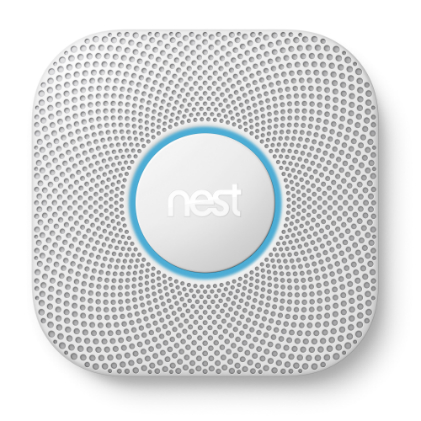 Photo courtesy of Nest
Photo courtesy of Nest
2.
First Alert
Onelink Wi-Fi smoke + carbon monoxide alarm
Like Nest Protect, this alarm also detects smoke and CO in a single device, and all the alarms will sound together when there is an event. The alarm uses photoelectric detection. For the 10-year battery model, the battery will last for the life of the device, and users won’t have to replace the battery. The alarm is compatible with Apple HomeKit and allows users to test or silence false alarms from their iPhone, iPad or iPod touch.
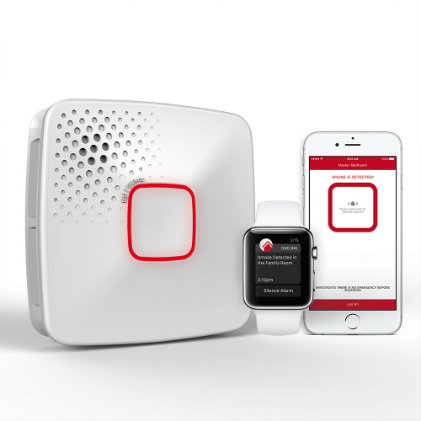 Photo courtesy of First Alert
Photo courtesy of First Alert
3.
Halo Labs
Halo+
Using both ionization and photoelectric technologies, Halo+ can detect fast moving fires and slow burning fires. What makes Halo+ really special is its weather alerts. According to Halo, “Halo+ comes with a radio that is tuned to the emergency weather channel, a channel that broadcasts weather threats across the US. Customers can even program Halo+ to monitor the threats they are specifically concerned about, whether that’s tornadoes, hurricanes, floods, or even amber alerts (child abductions).” Halo+ will be manufactured in the U.S.
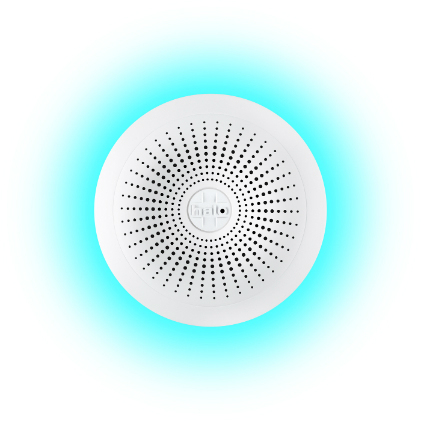 Photo courtesy of Halo Labs
Photo courtesy of Halo Labs
4.
The Crow Group (Crow)
DECT ULE SMK
DECT ULE SMK is a photoelectric smoke detector based on DECT ULE RF technology. It features over 10 years of battery life, battery status check on every transmission, low standby current and over-the-air SW update. DECT uses point-to-point connection, and with ULE standard extension, DECT ULE offers advantages like low power consumption, long range and no interference.
According to The Crow Group, this ULE compliant detector will be able to communicate with or be controlled by any gateway/base station that supports the ULE standard.
“There are several types of gateways/base stations that can be used for device control and rule configuration. Some gateways/base stations offer a keypad and a display as the user interface, like a handset for example, while some others have basic indication only, for example a few LEDs and/or buttons. For the latter type, Internet connection is required to enable device control and rule configuration from a smartphone, tablet or PC. There are also gateways/base stations that offer both a user interface and Internet connection,” says Zandberg.
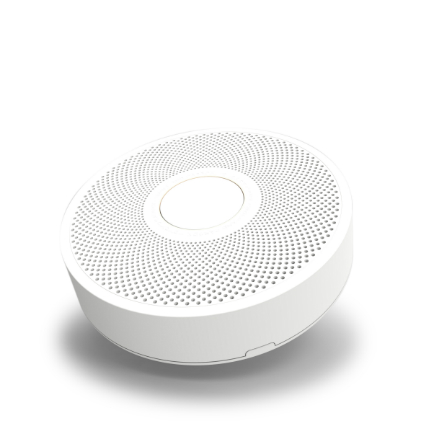 Photo courtesy of The Crow Group
Photo courtesy of The Crow Group
5.
Nietzsche Enterprise (NHR)
ZigBee indoor carbon monoxide (CO) detector SG-02-CO-xx
The ZigBee-based CO detector comes with a US/EU/UK adaptor and can be compatible with a range of control panels such as NHR's GO7 and Sentrolcloud. It has a built-in 85 dB alarm that supports voice alarms. The detector is triggered when the CO level reaches 100 ppm. As an option, the detector can connect with other detectors, and they can all sound at the same time. Low battery alert via audible alarm, flashing LED indicator and mobile alert is available.
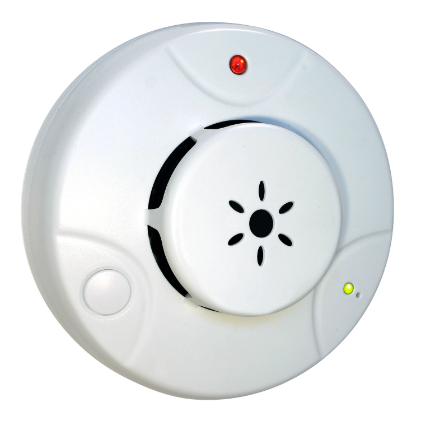 Photo courtesy of Nietzsche Enterprise
Photo courtesy of Nietzsche Enterprise
6.
FULL Enterprise
Smoke detector FZ-SK5002
The photoelectric smoke detector has two versions – hardwire and battery-operated. The detector utilizes ZigBee HA 1.2 technology and is compatible with ZigBee DIO router (Wze-02485dr) and ZigBee GSM Alarm System (Wzb-062). The detector is UL 94 V-0 compliant.
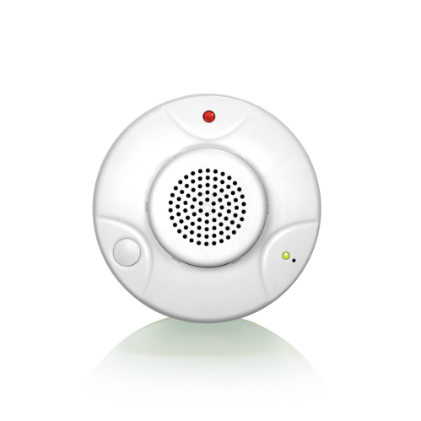 Photo courtesy of FULL Enterprise
Photo courtesy of FULL Enterprise
7.
Heiman
Smart smoke detector HS1SA
The smoke detector comes in two versions – one supporting ZigBee HA 1.2 and the other one supporting Z-Wave. It has an 85dB/3M alarm and provides low battery warning. The device features easy installation with 3M stickers and allows users to mute the alarm from the app. With two CR 1/2 AA batteries, the smoke detector can last up to 3 years.
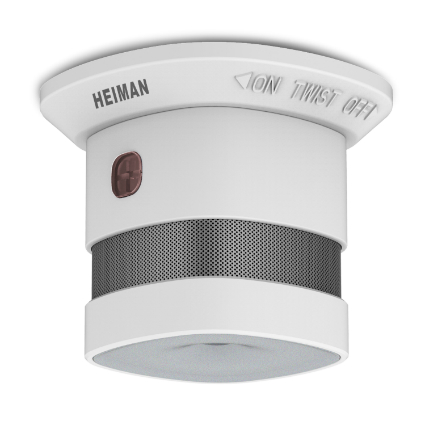 Photo courtesy of Heiman
Photo courtesy of Heiman